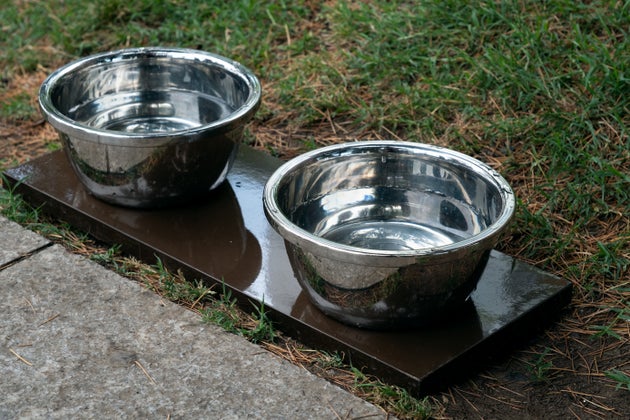You might associate drowning incidents with young children being left unattended in the bath, but water bowls for pets can prove just as deadly.
Sadly, accidental drownings appear to be on the rise in the UK. In 2022, 35 children died from accidental drowning. Compared to the five-year average, this was a 46% increase in fatalities.
Ross Smith, a former ambulance paramedic and founder of Safer Little Steps, recently took to TikTok to explain how children can drown in a shallow amount of water – we’re talking just 1-2 inches deep – in as little as 30 seconds.
In the clip, which has been viewed more than 635,000 times, Smith urged parents and caregivers to “always supervise children whether they’re in or around water” – and this includes leaving them alone briefly in the bathroom while a bath is running (as they could climb or fall into the water), or leaving them unattended near a pet’s water bowl.
“A little crawling child can drop their face into that and drown,” he warned of pet bowls. “It’s a very small amount of water and they drown very quickly.”
Discussing what actually happens if a child is submerged in water briefly, Smith explained: “They don’t suck a lot of water into their lungs. What happens is they breathe back that water, it hits the back of their little airway and the airway spasms to shut.
“Once the airway spasm shuts, it only takes 30 seconds for their brain to switch off – and once their brain switches off due to lack of oxygen, they stop breathing and become unconscious.”
This is why CPR can be so vital after a drowning incident.
What to do in this situation
St John’s Ambulance, which operates in the UK, advises that if a child is unresponsive and not breathing normally after drowning, parents need to call 999 or 112 for emergency help and start CPR straight away.
If you’re on your own, you need to give one minute of CPR before calling for help on a speakerphone.
Before starting CPR, Smith recommends clearing the child’s airway which will likely be blocked with water.
To do this, tip the child on their side and drain the water out, he advised. Then, put them on their back on a firm surface and check if they’re breathing normally or not.
“They might be taking a couple of small gasps,” he said, “that’s not normal breathing.”
If they’re not breathing normally, or at all, and they’re unresponsive, you will need to start CPR.
For a baby under one, you will need to follow these guidelines. St John’s Ambulance recommends five initial rescue breaths, followed by 30 chest compressions using two fingers, followed by two puffs.
Repeat this process until help arrives.
For a child, the advice is a bit different. St John’s Ambulance recommends five initial rescue breaths, followed by 30 chest compressions using the palm of your hand and two breaths.
By doing CPR, “you’re forcing the heart to squeeze and you’re pushing blood around their brain, and that blood has oxygen in it, so you’re keeping their brain alive until help arrives,” explained Smith. “So it’s just resuscitating brain cells, that’s all you’re really doing.”
You should keep doing this until help arrives. If your child becomes responsive at any point – so coughing, speaking, breathing normally or even speaking – put them in the recovery position.
“You’re the first person I’ve ever seen explain exactly WHY you do the compressions,” said one person in the comments section of the video.
Another said: “So incredibly informative and easy to understand – as a mum of two, I’m so grateful.”



